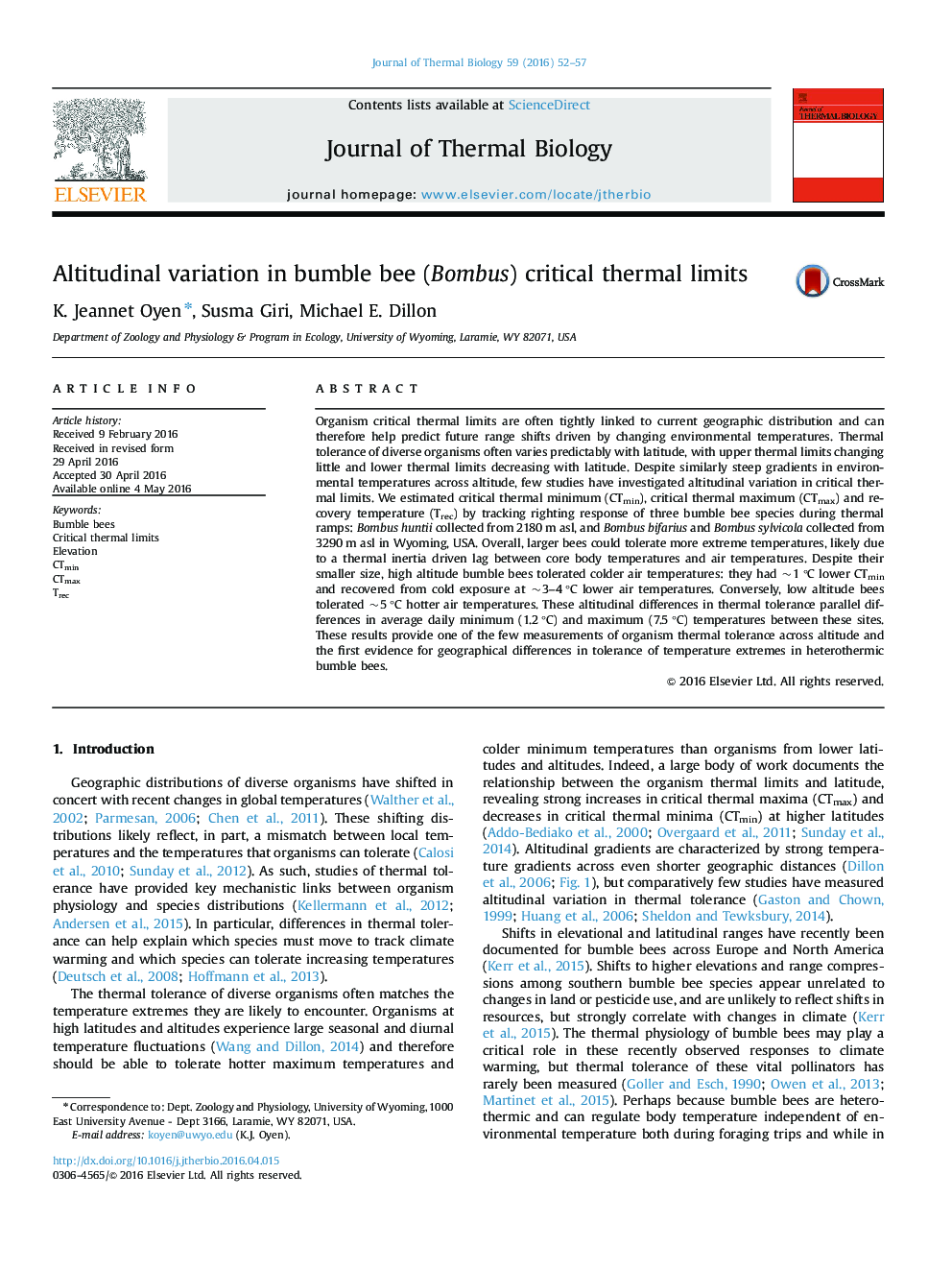| کد مقاله | کد نشریه | سال انتشار | مقاله انگلیسی | نسخه تمام متن |
|---|---|---|---|---|
| 2842677 | 1571087 | 2016 | 6 صفحه PDF | دانلود رایگان |
• CTmin of high altitude bumble bees was ~1 °C lower.
• High altitude bumble bees recovered at ~3–4 °C lower air temperatures.
• CTmax of low altitude bumble bees was 5 °C higher.
• These differences in thermal tolerance matched differences in extreme temperatures between sites.
• This provides the first evidence for geographic variation in bumble bee thermal tolerance.
Organism critical thermal limits are often tightly linked to current geographic distribution and can therefore help predict future range shifts driven by changing environmental temperatures. Thermal tolerance of diverse organisms often varies predictably with latitude, with upper thermal limits changing little and lower thermal limits decreasing with latitude. Despite similarly steep gradients in environmental temperatures across altitude, few studies have investigated altitudinal variation in critical thermal limits. We estimated critical thermal minimum (CTmin), critical thermal maximum (CTmax) and recovery temperature (Trec) by tracking righting response of three bumble bee species during thermal ramps: Bombus huntii collected from 2180 m asl, and Bombus bifarius and Bombus sylvicola collected from 3290 m asl in Wyoming, USA. Overall, larger bees could tolerate more extreme temperatures, likely due to a thermal inertia driven lag between core body temperatures and air temperatures. Despite their smaller size, high altitude bumble bees tolerated colder air temperatures: they had ~1 °C lower CTmin and recovered from cold exposure at ~3–4 °C lower air temperatures. Conversely, low altitude bees tolerated ~5 °C hotter air temperatures. These altitudinal differences in thermal tolerance parallel differences in average daily minimum (1.2 °C) and maximum (7.5 °C) temperatures between these sites. These results provide one of the few measurements of organism thermal tolerance across altitude and the first evidence for geographical differences in tolerance of temperature extremes in heterothermic bumble bees.
Journal: Journal of Thermal Biology - Volume 59, July 2016, Pages 52–57
